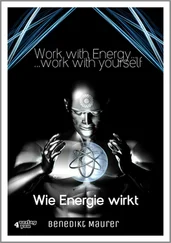Joblessness brings with it social and psychological challenges, including individual crises of identity, according to Amy Wrzesniewski, professor of organizational behavior at the Yale School of Management. “Our identities have been closely linked to our jobs,” she noted in our interview. “Our institutional relationships are central to mental health because of the role that organizational work has played sociologically over the past 100 years.” 50
Writing about the future of work in 1930, economist John Maynard Keynes, in “Economic Possibilities for our Grandchildren,” envisioned that within a century, the average person would be working 15 hours a week, and we would face an excessive leisure problem. 51 Keynes's view of the future was “frozen” in the sense that he did not consider the possibility of entirely new fields emerging in economies that have been infused with new technologies. What Keynes did not envision were all the new fields and human endeavors that were yet to be invented, from modern health care and education to the amazing creativity of the technology, media, and service industries. Those are largely what have driven employment and progress, and those are also the reasons that make many of us who are investigating the future of work feel optimistic. The future can offer much more than mechanized work, optimizing workflows, and grinding out efficiency; it can be about creation, and new levels of growth and innovation.

Though the future is unpredictable, there is a lot that we do know about the developments that will change how and where we work. This is because many are already underway. The way we frame what lies ahead is a critical navigational tool. Our traditional mental models and approaches to challenges will not serve as reliable guides. The signposts that follow can serve as practical guides for individuals who have families to support, mortgages to pay, and want to stay gainfully employed no matter what the future holds. These navigational tools can help empower the reader's own journey into the future of work.
The journey ahead begins with recognizing the rapidly evolving opportunities in front of us: The opportunities presented as work, workforces, and workplaces are being redesigned, redefined, and reimagined. The journey continues with the realization of the effort required to build resilience—in our careers, organizations, and leaders—for what lies ahead. And the journey culminates in planning and equipping ourselves for the growth and potential in the future—our growth as individuals, business leaders, citizens, and as a society. The path of this journey is the structure of this book.
Part I: Opportunity (Chapters 2, 3, 4)
Opportunity and Work. Recognize that the future is people and teams with machines, not against them. Rather than a substitution play in which robots and advanced technology replace human workers, we redefine the terms of competition, avoiding the trap that people and machines are in opposition to one another. There is the opportunity to create newfound value. As MIT professor, Erik Brynjolfsson, and Andrew McAfee advise, the answer is not to attempt to race against the machine or to try to slow down technology but to race with the machine. 52
Opportunity and the Workforce. Leverage the multiple forms that employment and work will take. In recent decades, the structure of employment models has been changing dramatically and quickly. Whereas the most common conception of employment is a full-time job, the diversity of work arrangements is growing to include part time, contractors, freelancers, gig workers, and crowd workers. How we integrate these talent models into our careers, our businesses, and our communities and societies will be a major challenge in the coming years.
Opportunity and Workplace. Expect to work anywhere, anytime, with anyone … or thing. We are learning from the Covid-19 pandemic how our work and personal lives could intersect. We witnessed the virtualization and shift to remote work and education. In the future many organizations may have as many people working offsite (at home, in coffee shops, and everywhere else) as in the office. As collaborative technologies along with digital reality, both virtual and augmented, become more pervasive and powerful, how we work may become more important than where we work.
Part II: Resilience (Chapters 5, 6, 7)
Resilience and Careers. Plan for longer lives with multiple phases. Resilience involves ongoing reinvention—being able to adapt, reskill, and upskill throughout our lifetimes. Enduring human capabilities that will be important in the future will include curiosity, creativity, problem-solving, empathy, communication, and leadership. We will need to develop and nurture our critical capabilities, including the ability to acquire new context-specific knowledge and routines, and to be comfortable with technology and data as our companions, along with our human colleagues and team members. 53
Resilience and Organizations. Prepare for the shift to teams and ecosystems as organizations transition from twentiethcentury approaches to twenty-first-century models. We are moving from hierarchies to networks of teams, from work being done in common locations to multiple locations—physical and digital. Work will increasingly evolve beyond a focus on process to a focus on projects, assignments, and initiatives. Teams and networks will strengthen organizational resilience and become the critical units of organizational performance and professional development.
Resilience and Leadership. Embrace new capabilities to lead teams and manage new forms of work; move from controlling to coaching; shift from an almost singular focus on costs and efficiency to an expanded view of growth, innovation, value, and meaning; accept dynamic ongoing change; and gain a new level of comfort with technology and data, ambiguity and risk, and people and machines. Leadership resilience will be empowered as leaders continue to experience the shift from managing through control and direct supervision to managing with increased coaching, design, influence, and inspiration.
Part III: Growth (Chapters 8, 9, 10)
Growth and Individuals. Embrace adaptation and a growth mindset. Develop and curate a portfolio of experiences and the range of human skills and capabilities that will be essential in 100-year, multistage lives. 54 Build the skills to thrive in teams; drive your own development; and integrate combinations of education, work, and personal pursuits throughout your life.
Growth and Business. Focus on creating new value and augmentation—not on replacement and automation. Redesign jobs and redefine work for cost, value, and meaning for customers, the workforce, and the enterprise. Partner with the workforce to build career marketplaces and opportunity pathways for growth and development; and design ways of working and workplaces integrating our personal and professional lives and accessing talent and capabilities from anywhere.
Growth and Society. Rethink and reset education, labor regulations, job transitions, and ethics to empower the future of work in communities and regions. Question whether our social and public institutions and programs reflect our values as citizens, communities, and societies, especially as we face technological, social, and political changes, including recent movements in the United States concerning racial equity and inclusion. Recognize the impact of work, workforce, and workplace design and regulation on our lives and on the future of local communities and our shared global environment.
Читать дальше













